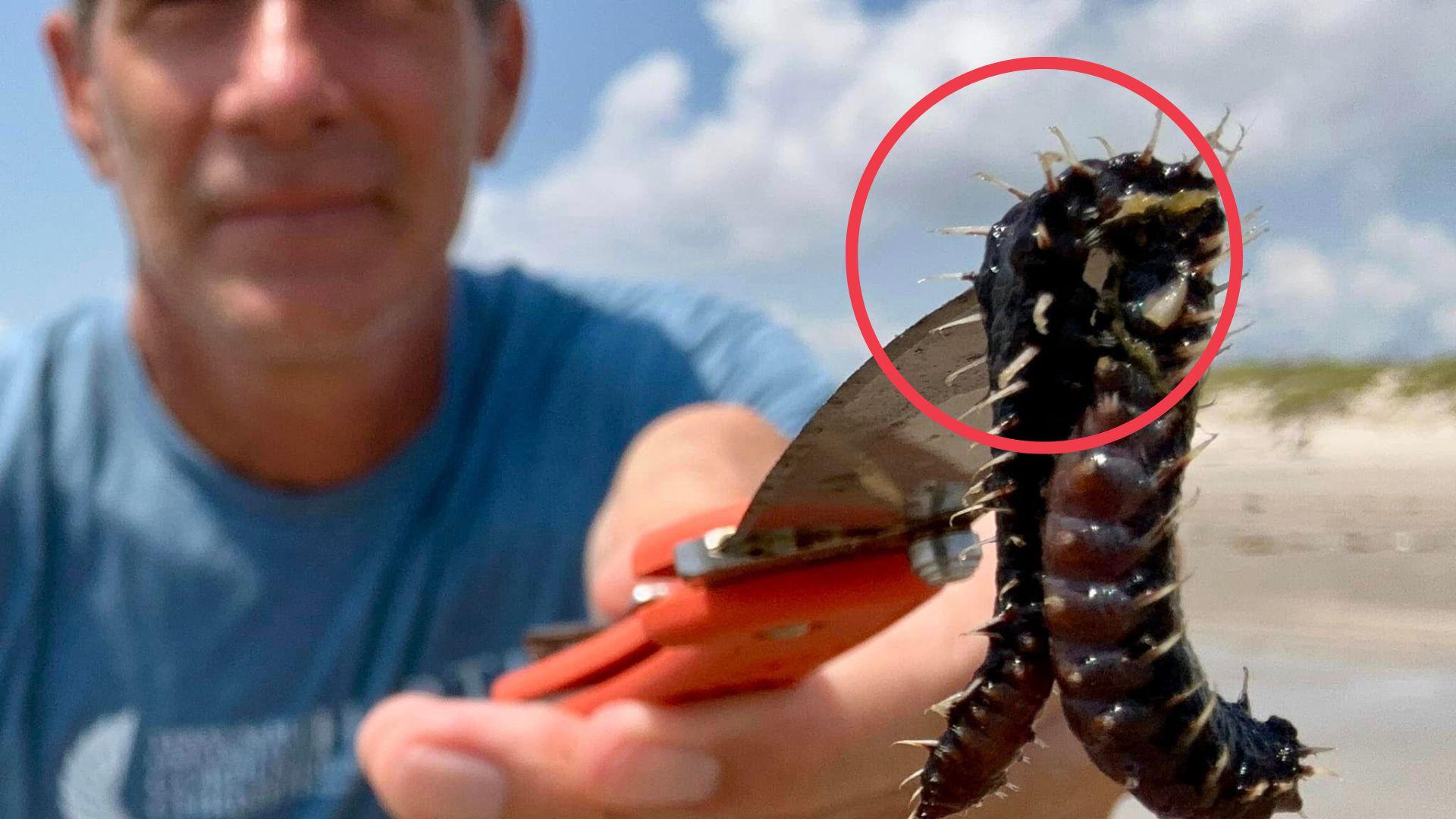There are so many different creatures that roam the beach that could cause one quite a fright! The comforting detail is that most of these unsettling creatures live in the darkest depths of the ocean, away from the areas that we swim in during our family summer beach days.
However, the nightmarish creature that showed up on a Texas beach was a lot creepier than your average shark or crab. What was found?
What Even is That Thing?
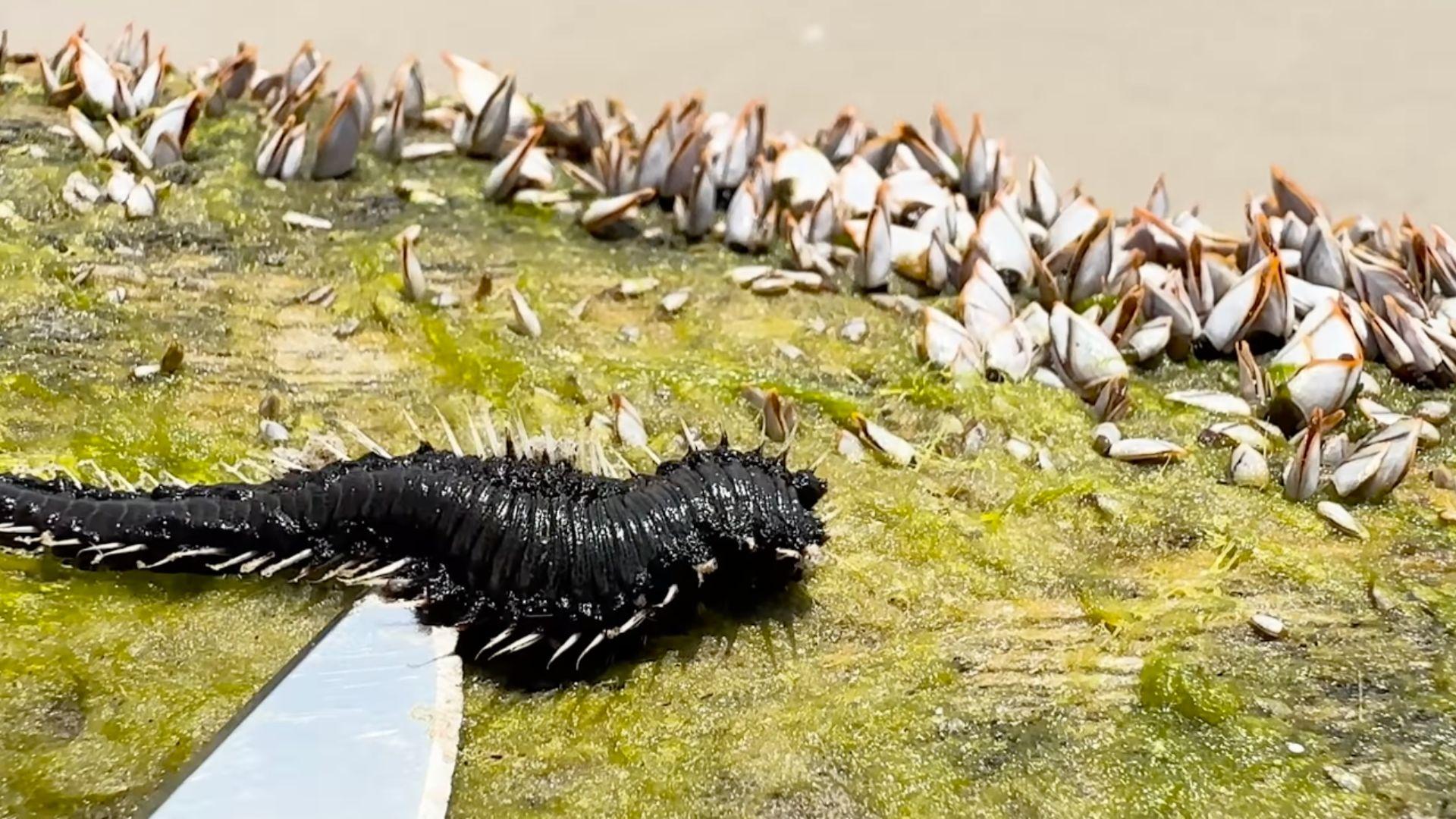
The official name for this squirming little creature is a bearded fireworm. These worms are native to the ocean. It gets its namesake from its bright red color, making it very easy to spot.
They are dangerous creatures and keep to themselves, which is why they are not usually found in aquariums and their existence is unknown to many.
Blasphemous Beachcombing
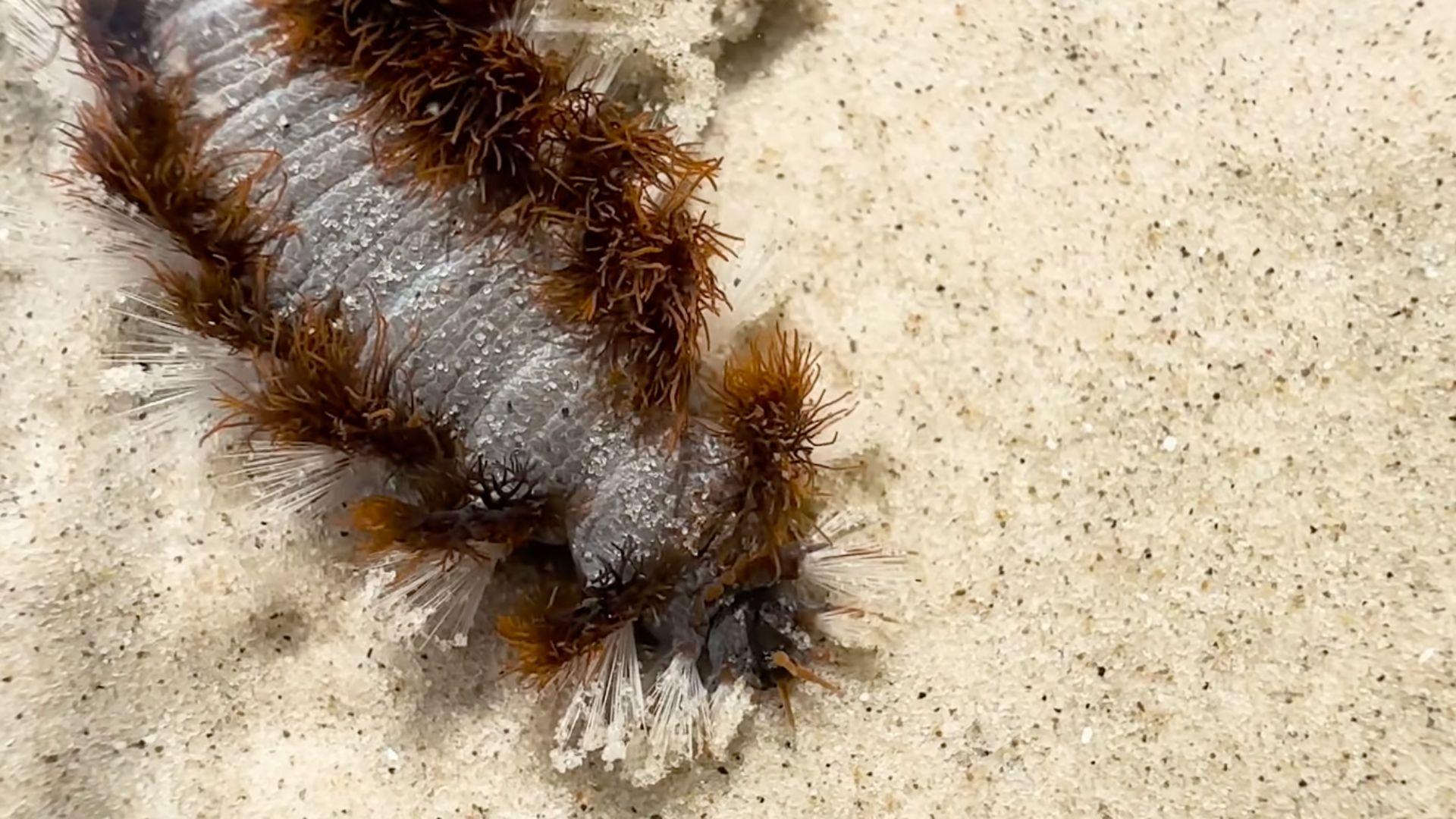
The Harte Research Institute for Gulf of Mexico Studies hosts a beachcombing series on their social media platforms. Beachcombing is the act of walking on the beach looking for debris, artifacts, interesting wildlife, or any other factor that is out of the ordinary.
The host of this particular beachcombing session was Jace Tunnel. He discovered the prickly worms and filmed his discoveries to be aired in a new episode of the beachcombing series in September.
Dangerous to the Touch
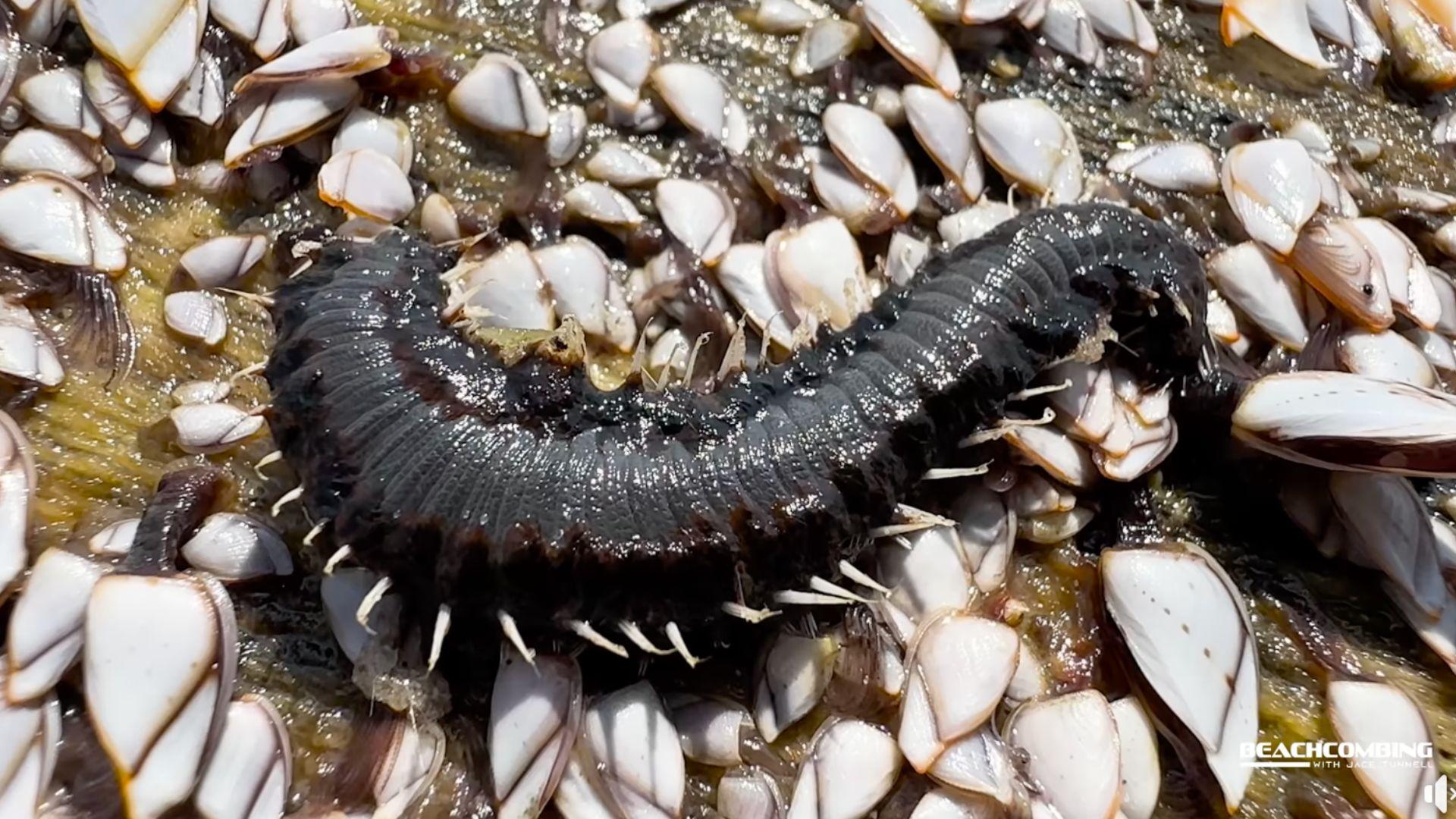
The tiny spikes that sit on the outside of the body result in a sharp pain upon being touched. These worms sport these painful spikes in order to ward off predators and protect themselves from harm.
Not only does it hurt to initially touch a bearded fireworm, but the site of contact will continue to sting for hours afterwards due to a toxin that is released after the worm is touched.
Science Behind the Sting
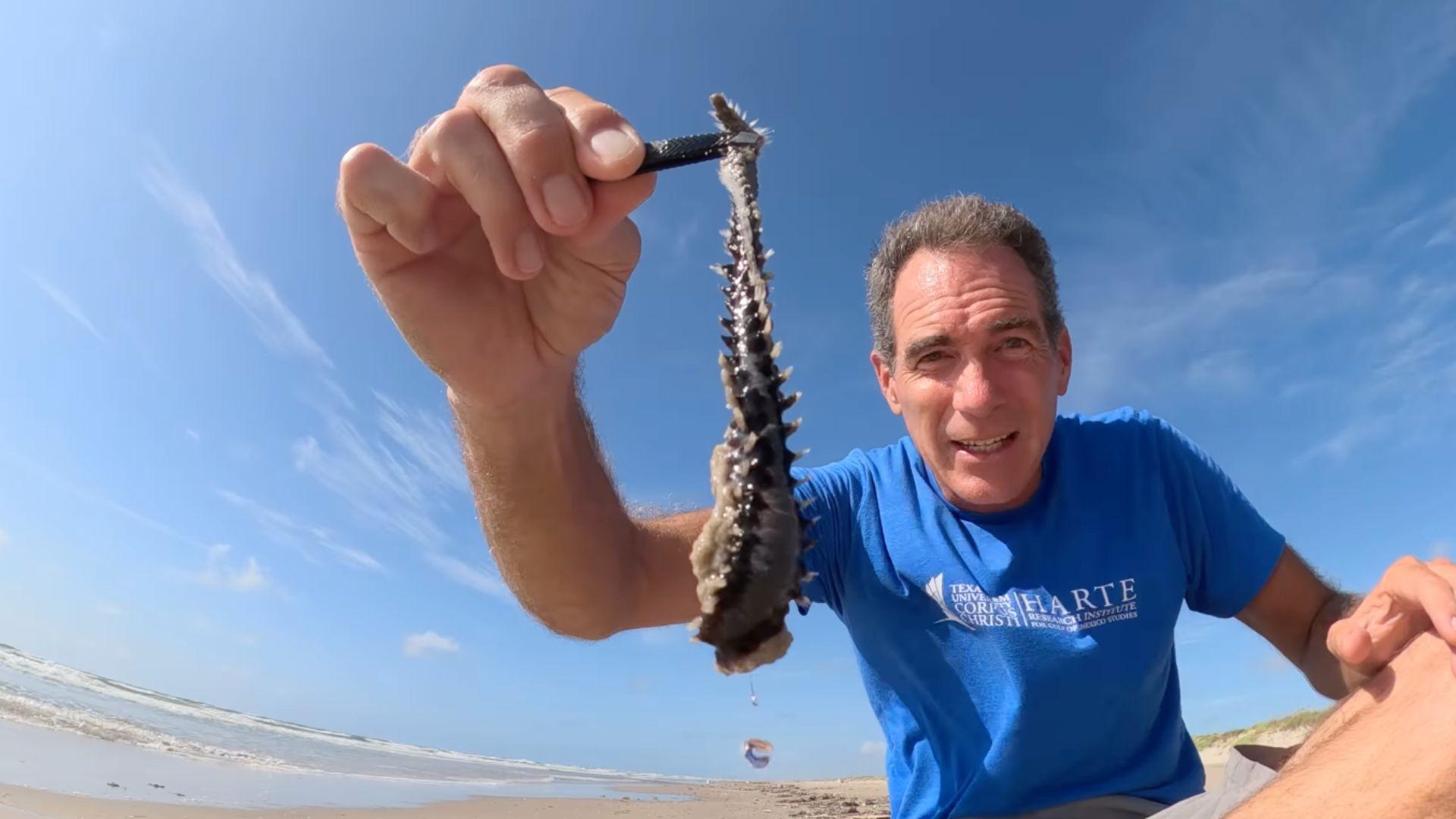
But why does it hurt when you actually touch a fireworm? The spikes that sit on the outside of the worm’s body are actually compartments that are filled with neurotoxin. When you make contact with a fireworm, the spikes break and the neurotoxin is released onto your skin.
The site of the sting will burn even more if the bristles end up stuck in your body. To avoid extra pain, make sure to remove any spikes that get wedged in your skin. Some methods that have been effective to complete this are using tape or tweezers.
A Long Journey
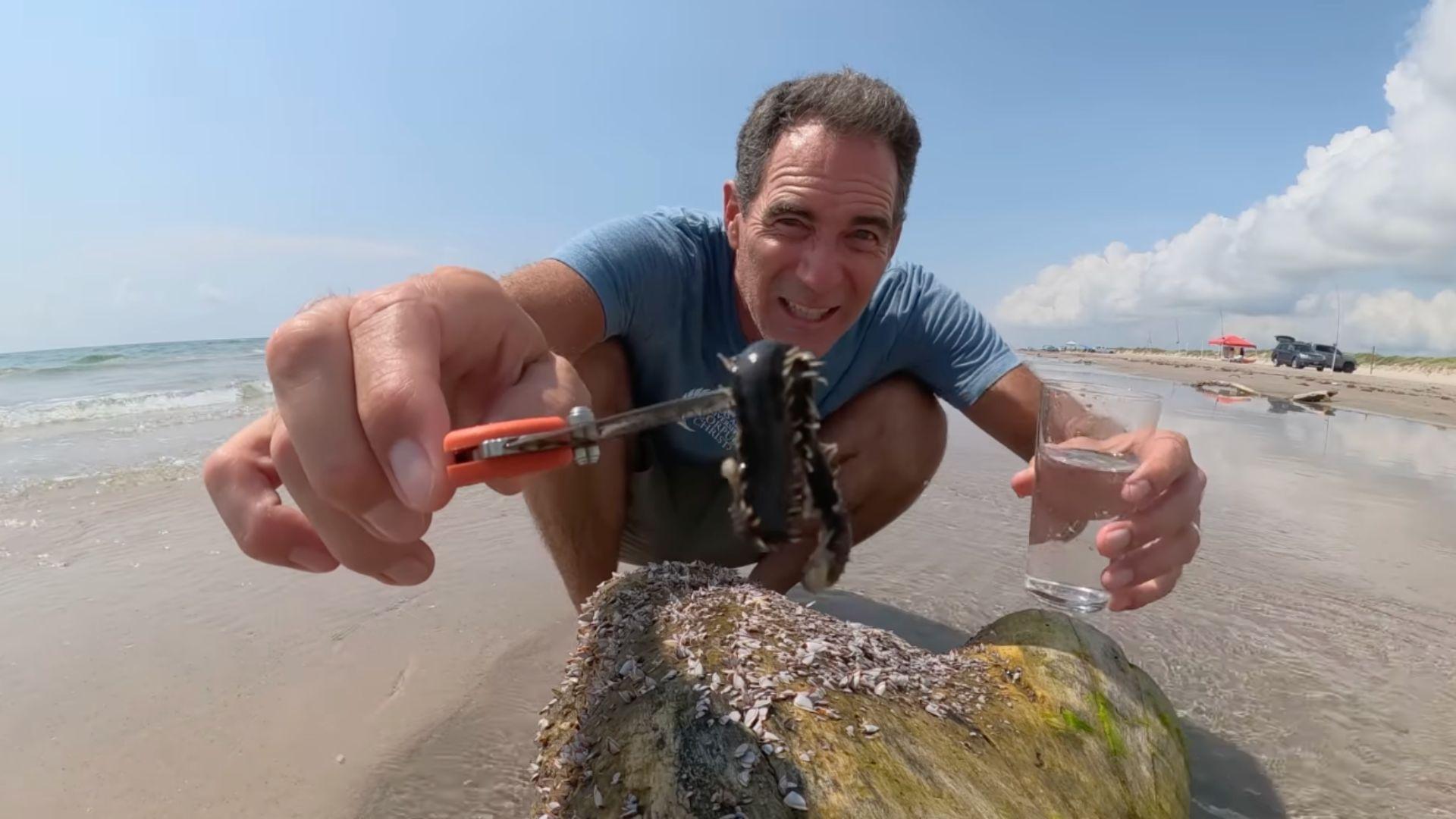
These worms can’t really swim, so they sit on floating debris in the ocean. They usually don’t attempt to find humans and keep to themselves as they float on by.
Gooseneck barnacles grow on these logs and are what these spiky animals feed on. By hanging out on floating debris, they have easy access to barnacles to consume.
Where was it Found?
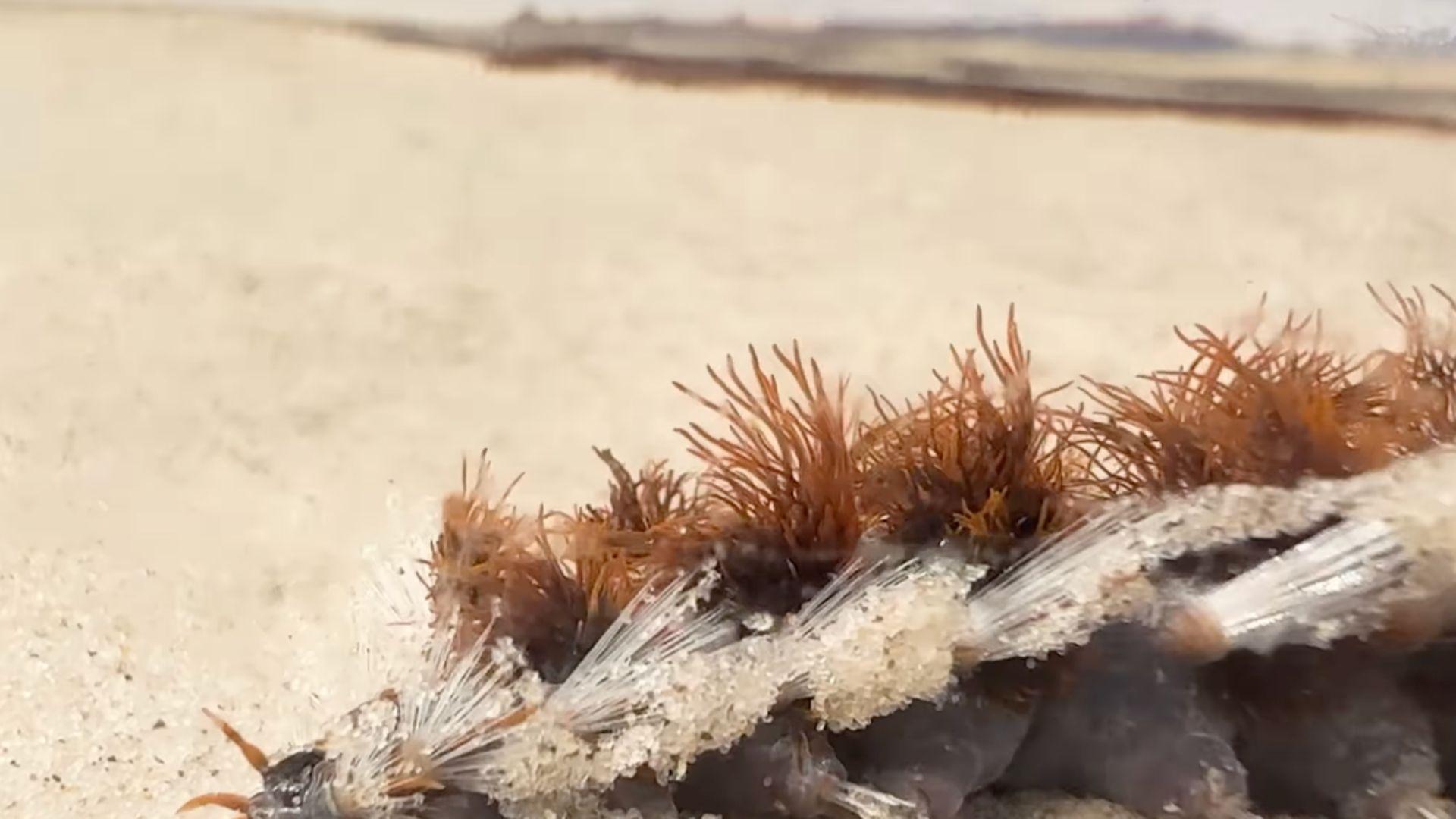
The exact location these fireworms were discovered was on the beach near Mustang Island in Texas. When the beachcomber was walking along the beach, he spotted the bright wed fireworm sitting on a log.
He suspected that the worm must have been sitting there to feed on the gooseneck barnacles that inhabit the piece of debris.
Long Lifespan
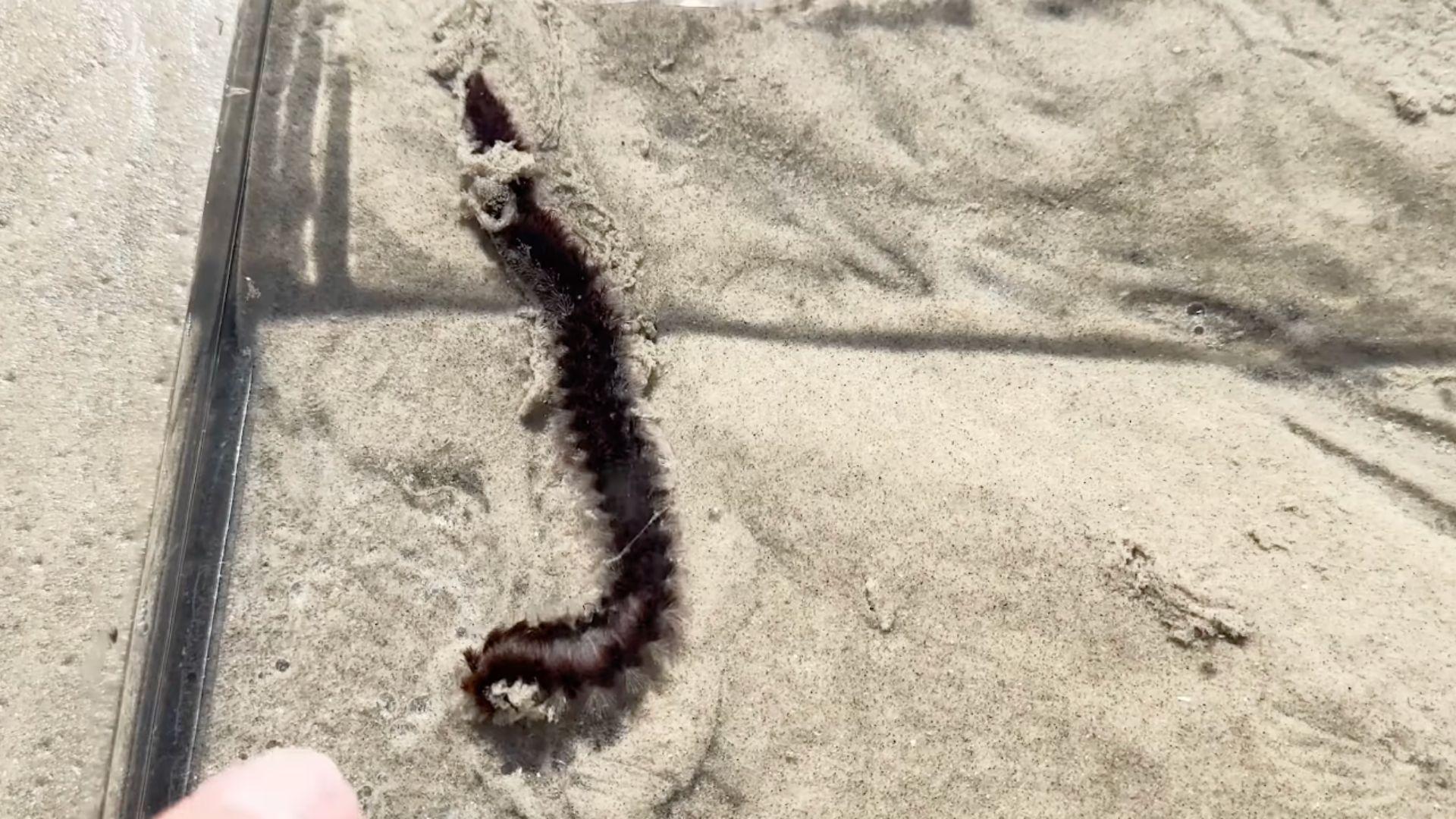
The critters can live between two and-a-half and nine years. There are many different species of this worm, all of which can inflict pain onto humans upon contact.
If someone is stung by a fireworm, the site could even have a scar for a very long period of time far after the bristles are gone from the skin. It’s important to remove the bristles as soon as possible to prevent long term damage to the best of your ability.
Not the First Time!
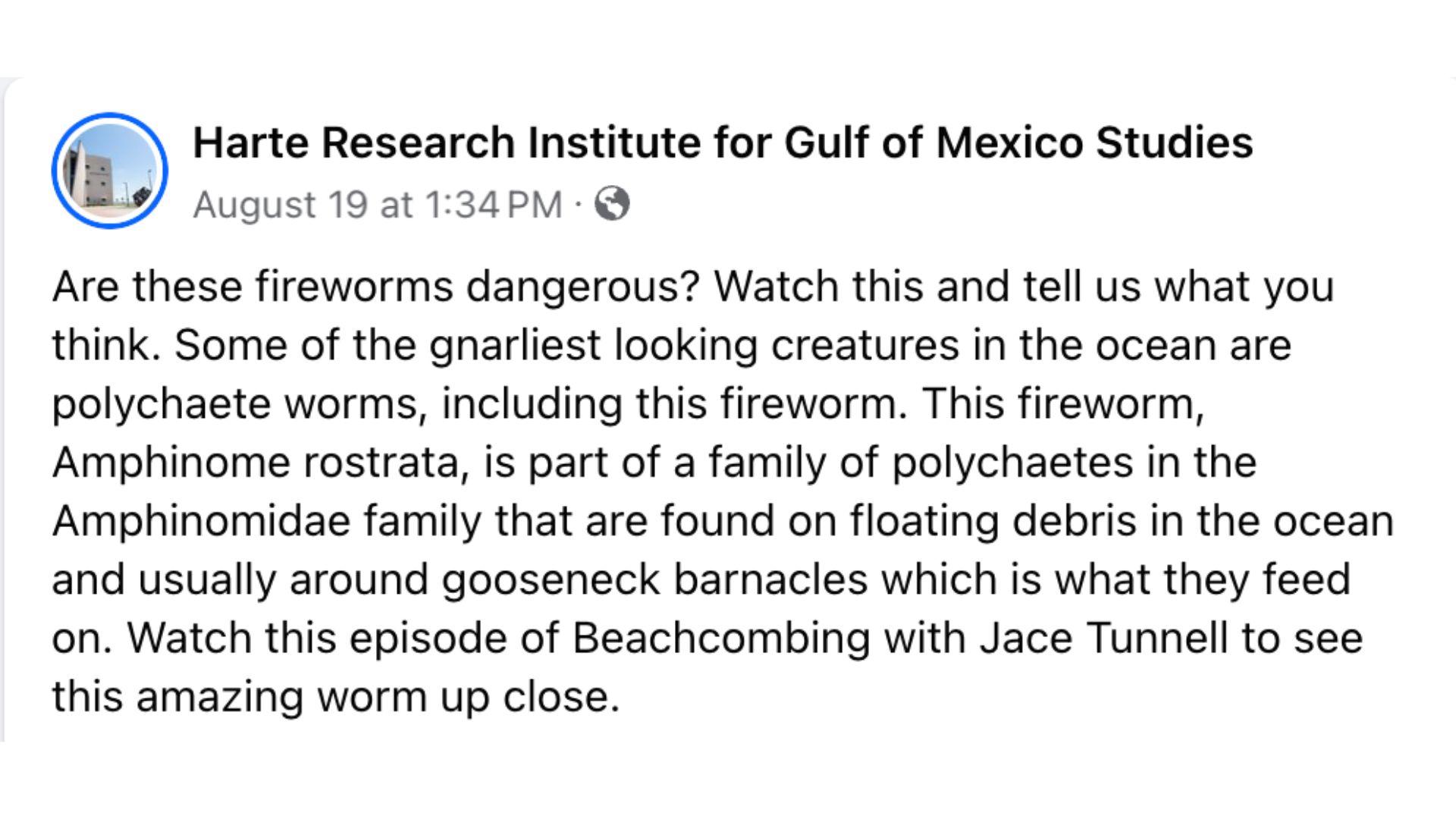
This discovery of the red creatures on the washed up log has not been the first finding recently. There have been multiple other occurrences of discoveries of fireworms being washed up on the shore over these past few days.
Just make sure to avoid large logs if you have a nice beach day planned, as a sting from one of these fiery red beings will certainly ruin a perfect day on the shore.
Strong Research

The sightings of these prickly entities has been made by The Harte Research Institute for Gulf of Mexico Studies. This group is focused on the Gulf of Mexico and works to explore the wildlife present there and promote its conservation.
The organization strives to carry out research on the everyday happenings of the Gulf in order to best protect it. They raise money from those who have a care for the environment and utilize staff and students to conduct research.

